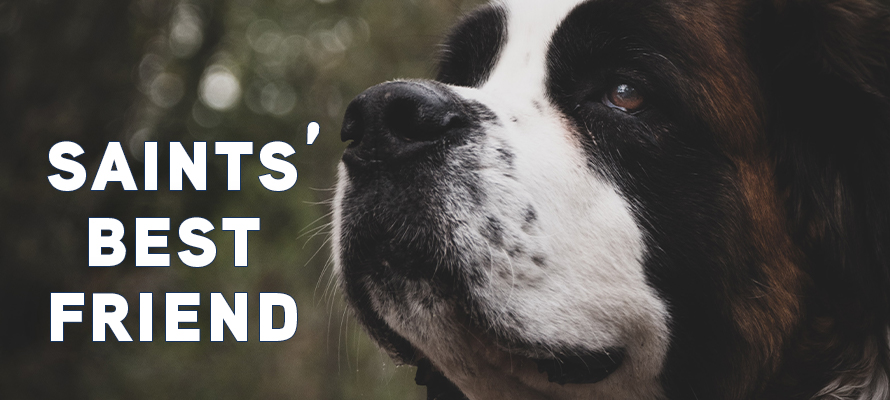
For nearly 400 years, pilgrims and other travelers received help high up in the Alpine region of the Great St. Bernard Pass from a dog breed of the same name. Originally guard dogs for the monks and visitors of the Hospice of St. Bernard, over time, these dogs were specially bred as mountain rescue dogs. Their large bodies were strong enough to trek through the deep snow and their keen sense of smell could help detect lost travelers in the often-harsh conditions.
The Great St. Bernard Pass connects parts of what is now Switzerland and Italy and has been an important pass through the Alps since at least the Bronze Age. In 990, Bishop Sigeric of Canterbury passed through here on his way to and from Rome along what has become known as the Via Francigena. Throughout the centuries, thousands of pilgrims have followed in his footsteps, many staying at the hospice run by the monks in their monastery on the Pass, built specifically for this purpose.
Due to its location, the road through the pass is only open from June to October (depending on the snow levels), as the weather is often treacherous and unpredictable at other times of the year. The lake near the crossing is covered in ice an average of over 8 months per year and the average high in summer is only in the low 50s. The Congregation of Canons of Great Saint Bernard welcomes visitors to the hospice year-round, as they have for hundreds of years, though when the road is closed, visitors can only reach the hospice if traveling via snowshoes or skis.
Bernard of Menthon was born in what is now France around the year 1020. Despite his father’s attempts to have him married, he became a missionary priest prior to his appointment as archdeacon of the Aosta Cathedral. He was known for his effective preaching, encouraging numerous conversions. Part of his role as archdeacon was caring for the poor and travelers. He recognized the need to offer help and safety to people crossing the alpine pass, so he established the congregation to do so. In addition, he later founded another hostel on what is now known as Little St. Bernard Pass. Bernard named this new community after St. Nicholas of Myra, the patron saint of travelers, but after his death, it was renamed in his own honor.
Also named in Bernard’s honor are the dogs, who now live at the hospice only during the summer tourist season. With the creation of the road tunnel underneath the pass and modern search and rescue technology, their services are no longer needed to help stranded travelers. Instead, they are a much-loved breed throughout the world carrying the name of this hospitable monk who is also the patron saint of skiing, snowboarding, hiking, backpacking, and mountaineering.
Check out our latest FREE eBook –
a perpetual calendar for the Church's immovable feast days!
Follow along all year round and find something to celebrate every week.




